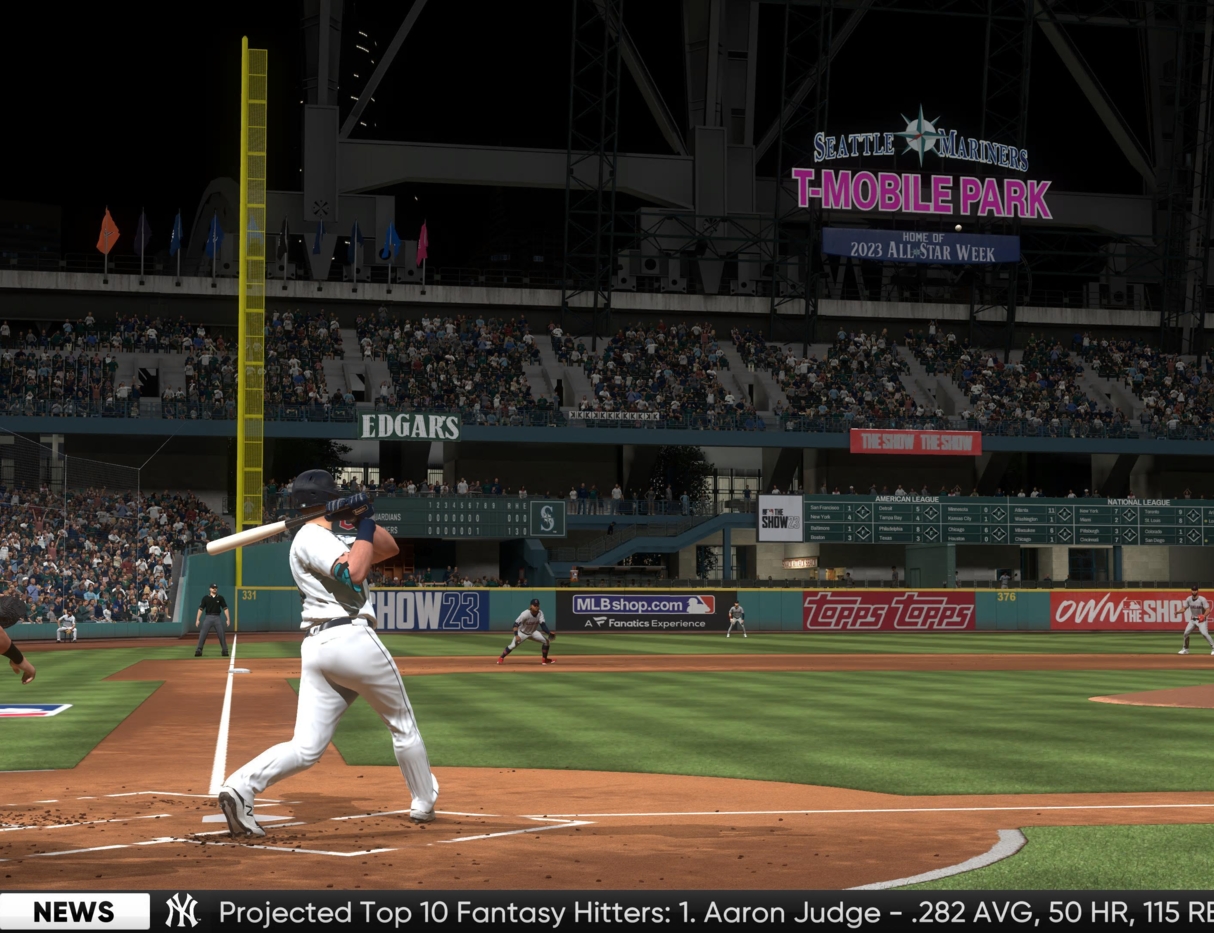Jackie Robinson is many things: a hall of fame baseball player; a Rookie of the Year, MVP, and World Series winner; and, most notably, the first Black man to break baseball’s color line and compete in the Major Leagues. The legendary number 42 made his Brooklyn Dodgers debut in 1947 and lit up the diamond with his electric playstyle, all while facing intolerance and hatred from fans, opposing players, and teammates alike. Jackie Robinson’s alluring talent was one of the reasons he was chosen to be the first Negro League player to integrate into the previously segregated Major Leagues, but it was his outstanding intangibles–such as his ability to handle racist abuse with grace–that sealed the deal. Bob Kendrick, president of the Negro Leagues Baseball Museum, will tell you that Jackie Robinson wasn’t the greatest player to ply his trade in the Negro Leagues. That’s not to disparage one of the greatest players of all time, but to provide context for just how good some of the league’s other players were.
MLB The Show 23 shines a spotlight on these unknown and forgotten heroes of the Negro Leagues. A new Storylines mode explores the league’s rich history, telling a captivating story of extraordinary people triumphing in the face of abhorrent prejudice and hate. It’s a landmark moment for sports games–and video games in general–meshing The Show’s consistently excellent gameplay with educational and inspiring video packages narrated by the extremely knowledgeable Kendrick himself. The rest of the game iterates on its predecessors and shakes up the Diamond Dynasty formula with some major changes, but it’s Storylines: The Negro Leagues that stands out above all else and elevates the entire experience.
Eight players are featured in this interactive learning tool: Leroy “Satchel” Page, Hilton Smith, Andrew “Rube” Foster, Hank Thompson, John Jordan “Buck” O’Neil, Jackie Robinson, John Donaldson, and Martin Dihigo. You may have only heard of one or two of these players, but every legendary figure has a whole series dedicated to their life and career, with each one spanning between eight and nine episodes.

A single episode consists of a video package combining archival footage with eye-catching art that brings each player to life, and one or two gameplay scenarios that highlight what made them so special. These are similar to the Moments found in Diamond Dynasty, tasking you with completing different objectives such as striking out two batters or hitting a home run. They’re usually fairly short, but the commentary adds additional trinkets about the players and the circumstances surrounding each moment, and the attention to detail in each one is fantastic. All of the authentic team uniforms and stadiums are featured, right down to the baggy pants and era-appropriate vehicles sitting in the parking lot. Even the crowds are dolled up, with men sporting ties and women wearing their finest dresses. The best teams often played each other on Sunday afternoons, so the capacity crowds would show up after church dressed in their Sunday best. These weren’t just ballgames, but social occasions, and a venue for African-Americans to express themselves. It’s great that this is reflected in the game.
However, the moments that stand out the most are those that implement details learned from Kendrick’s fascinating narration. In your first game pitching with Satchel Page, for instance, his repertoire consists of the usual fastballs and sliders. Yet this changes after you find out he had unique names for every pitch type he threw. In subsequent games, you choose to pitch from a selection including a bee, dipsy, and creep. It’s a small detail, but one of the ways Storylines showcases Satchel’s enormous personality. The best of these is when he makes a point of striking out the side after a white opposing player insults him with a racial epithet. The kicker is that he does so after instructing the entire defense to huddle around the mound; such was his confidence that the hitters wouldn’t be able to make contact with his electrifying stuff.
Baseball is a sport full of history and mythology, and you can see how Kendrick relishes in recounting the myths surrounding these players while also delving into the facts. His stories are as much about baseball as they are about civil rights, and the way he tells them is both captivating and highly illuminating. This might be the first time you’ll hear about Negro League teams having to take grueling 24-hour bus rides to away games, not knowing if they’d be able to find a place to eat or a hotel to stay in because of their skin color. In the modern game, Shohei Ohtani is rightfully lauded for being an All-Star at the plate and on the mound, with many proclaiming that such a feat hasn’t occurred since Babe Ruth graced the diamond, yet the Negro Leagues were full of exceptional two-way stars–including Martin Dihigo, who was not only a pitcher but also played every single position on the field.
Storylines: The Negro Leagues draws attention to players who were lionized by their communities because of their ability to excel and overcome the limits imposed on them by systemic racism. These eight Black baseball pioneers are some of the best the sport has ever known, yet knowing who they are is a rarity for so many. The Show 23 is hopefully a marker for change, because the Negro Leagues are an integral part of both baseball and American history, and the people involved deserve to have their stories told.
You can even match them up against modern stars, as completing each player’s series unlocks a 90-rated version of them for use in Diamond Dynasty. The long-running card-collecting mode remains one of the best iterations of its type. Microtransactions are still present, but Sony San Diego continues to move further away from this gross practice cementing itself at Diamond Dynasty’s core. There are dozens of ways to collect and build a team of your favorite players just by playing the game, whether they’re legends from the past or current superstars–from mini-seasons and showdowns to conquest maps and online ranked matches.

The big change this year is a shift to seasonal teams, which breaks the traditional power curve by introducing 99-rated cards right out of the gate. Throughout the year, seasons will cycle out cards to ensure that squads are kept fresh. For instance, you can currently earn World Baseball Classic-themed cards, but once Season 3 starts on July 7, these players won’t be available to use in modes like Conquest and ranked matches. Instead, there will be new cards to unlock and use, ensuring that you won’t end up facing the same two pitchers throughout the game’s lifespan, as was the case last year. It’s a divisive change, but one that will make for more diverse teams while also letting you earn powerful cards much earlier than before.
The addition of team captains also makes it viable to build theme teams, as new Captain cards will boost particular players. If you set someone like newly added legend Derek Jeter as captain and put him on a team with other Captain Series hitters, they’ll all receive boosts to various attributes. Currently, this ties into mini-seasons, where you can compete with theme teams to earn specific rewards. One requires you to build a squad like the one mentioned above, while the other challenges you to construct a team comprised of nothing but lefties. This incentivizes you to use players you might not otherwise consider and should keep mini-seasons feeling fresh throughout the year.
Once you step up to the plate or settle in on the mound, The Show 23 still plays a fantastic game of baseball. Tweaks to the Button Accuracy throwing meter create a greater disparity between good and great fielders, while also factoring in the difficulty of each throw. Previously, the meter was consistent, with the accurate green zone always appearing in the middle. This made it easy to hurl pinpoint throws each time, but now the green zone will dynamically move and shrink to account for tough infield plays and long outfield throws. Fielding is more engaging as a result, and this adds to the game’s authenticity as you’ll definitely see more throwing errors this time around. The outfield also feels somewhat bigger. This is taken from a small sample size, but so far, doubles are much more prevalent than home runs in The Show 23. The long ball was perhaps too frequent last year, but now the pendulum seems to have swung the opposite way. This isn’t a bad thing, although Moments that task you with hitting bombs can drag when fly balls continuously die at the warning track.
Franchise mode is much the same as before, aside from the addition of an overhauled scouting system. Each week before the draft, you’re able to assign three scouts to scout a specific prospect, a single position, or unearth players who aren’t even on your draft board yet. Prospect generation is much improved this year. Previously, draft classes included far too many older players, but each draft now contains players in the range of 18 to 23 years old, with most of them erring on the younger side. Scouting a player gives you a rough estimate of their attributes and potential, but you won’t know a player’s true rating until after you draft and sign them.
This mimics reality to some degree since very few prospects are a sure thing. You could draft the next great superstar or end up with a player who never even steps foot in the majors. The MLB draft slot and signing bonus system have also been added to the game, so even after you’ve drafted a player you still need to sign them to a deal before the deadline passes, forcing you to consider their interest level and potential signing bonus amount before drafting them. All of this makes the draft a much more exciting proposition, although the same can’t be said for Road to the Show, which adds little more than a few new presentational flourishes.
After feeling like the series was treading water for the past couple of years, MLB The Show 23 sees Sony San Diego introduce some significant additions to its baseball sim. Road to the Show has still been neglected, but incremental gameplay improvements slightly enhance the on-field action, and Franchise has received a long-overdue shot in the arm with its expanded scouting system. The new seasonal structure to Diamond Dynasty should also make for a more interesting mode throughout the course of the year, and Storylines: The Negro Leagues is worth the price of admission alone. It may not move the needle in every area, but MLB The Show 23 is another deep sports title that will keep you busy long into October and beyond.











